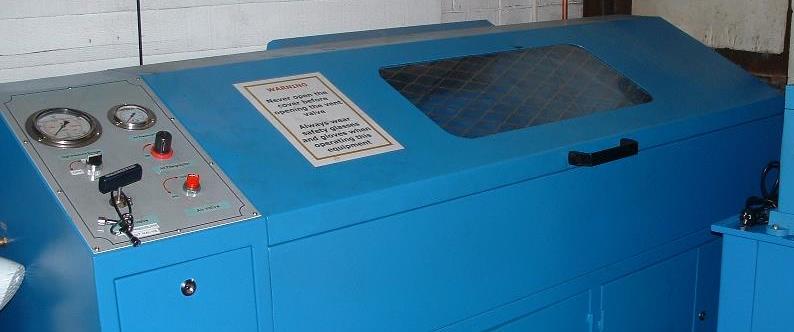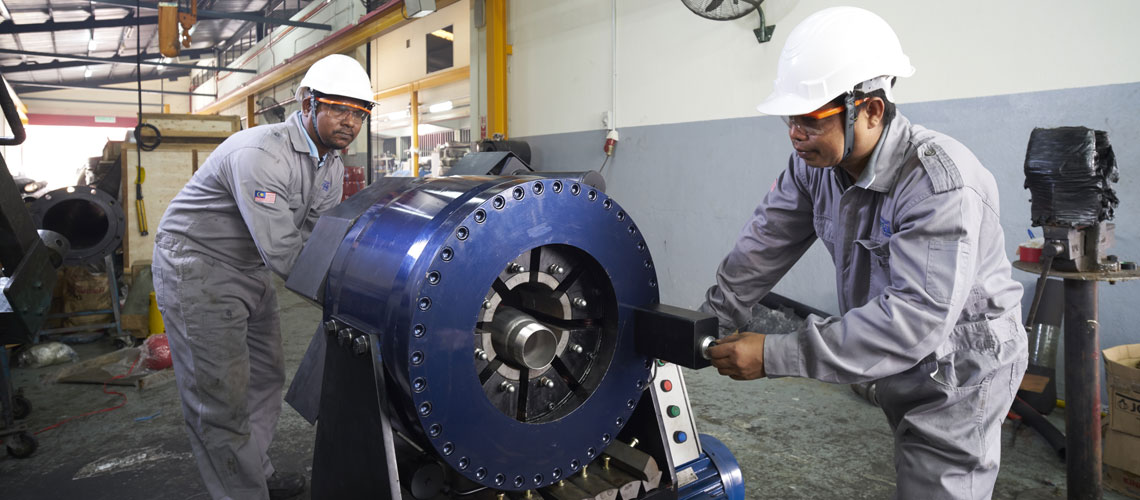HYDROTEST SERVICES
A hydrostatic test is a way in which hose and couplings for pipelines, plumbing, gas cylinders, boilers and fuel tanks can be tested for strength and leaks. The test involves filling the equipment with a liquid, usually water, which may be dyed to aid in visual leak detection, and pressurization of the vessel to the specified test pressure. Pressure tightness can be tested by shutting off the supply valve and observing whether there is a pressure loss. The location of a leak can be visually identified more easily if the water contains a colorant. Strength is usually tested by measuring permanent deformation of the container. Hydrostatic testing is the most common method employed for testing pipes and pressure vessels. Using this test helps maintain safety standards and durability of an equipment over time. Newly manufactured pieces are initially qualified using the hydrostatic test. They are then re-qualified at regular intervals using the proof pressure test which is also called the modified hydrostatic test. Testing of equipment for transport and storage of gases is very important because such containers can explode if they fail under pressure.

POSITIVE MATERIAL IDENTIFICATION (PMI) SERVICE
PMI (Positive Material Identification) testing is the analysis of materials to determine the chemical composition of a metal or alloy at particular (usually multiple) steps of alloy manufacturing or in-process alloy installation. Knowing the exact composition and grade of an alloy enables suppliers, plant workers, and other responsible parties in the chain of custody of components to match alloy specifications that are chosen for their specific properties such as heat resistance, corrosion resistance, durability, etc. Having the right alloy in the right place is essential in places like petroleum refineries and chemical plants, because the right alloy with the right properties is often all that stands between a safe, efficient operation and lost time and revenue.

VACUUM TEST SERVICE
The vacuum test is for testing of hose sections, which allows inspection of the inner surface of the hose for blisters or separation of the inner tube from the carcass. The process also carried out to detect an eventual delaminating of the rubber liner.

HOSE COUPLING REPAIR SERVICES
We are familiar with the flow of product from market need, product design, prototyping and development, field testing and production implementation. We are able to assist in covering these areas from start to finish with high quality components and wealth of experience in supporting your needs. We also provided the process of swaging, welding, clamping and cutting for hoses and coupling.

